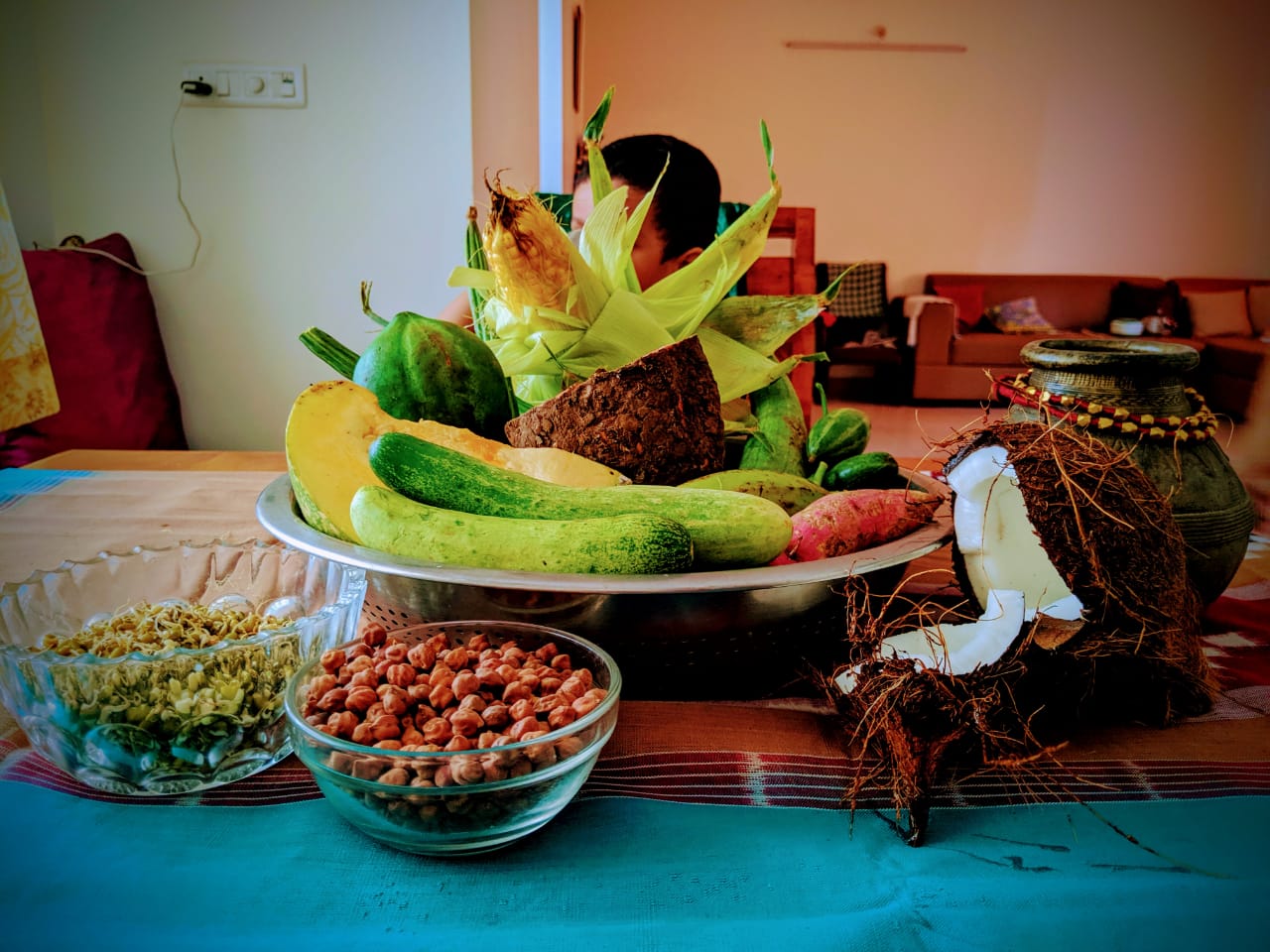Take it from a diehard foodie; Odia Ghanta is a celebratory dish that you should be raiding an Odia kitchen for at least once.
Communities across India have their own version of mixed vegetable dishes. Gujaratis have their Uttarayan special Undhiyu, Keralites have their Avial and Bengalis have their Ghonto and Labra.
And then there are some commercially thriving mixed vegetarian dishes like Veg Kadai, Navratan Sabzi, etc. The last one, I only had once at a strictly vegetarian North Indian wedding banquet. That too is due to a lack of options. To me, it appears like a bimbo hankering for attention among people with substance. It is just a show-off dish with lots of oil, spice and expensive nuts. And nobody has any idea about which community owns it.
In Odisha, people like to eat a mixed vegetable dish on a regular basis. We Odias hardly cook single vegetable dishes, unless it’s stir-fries or Alu Dum. We use vegetables in our Ghanta, Ambila, Dalma, Santula, Besara and even in Saag. Odias let the vegetables shine in their own glory; with minimal interference of spices.
WHAT’S COOKING!

We cook fish and shrimps with mixed vegetables too. But today, let’s talk about the iconic Ghanta (pronounced as Ghantaw); the vegetarian version. Ghanta calls for a special occasion like a wedding, family get together or Gruhapravesh to make an appearance. And, no wonder! To prepare it, one needs to collect a long list of seasonal and indigenous vegetables. The preparations are an elaborate affair as well. It involves the use of sprouted legumes, groundnuts and freshly grated coconut all in the right ratio. The proportion is paramount for good Ghanta.
There are three occasions when most Odia households cook a Ghanta dish—Dutia/Dwitiya Ghanta (on Mula Ashtami), Garbhana Sankranti Ghanta (on Tula Sankranti) and Ghadaghadia Ghanta (on Samba Dashami). The first two Ghanta are similar, but the third is quite different.
Dutibahana Osha

On the occasion of Dutibahana Osha (celebrated as a Pua Jimtia/Jiutia in western Odisha), mothers fast for the well-being of their kids. Even childless women fast, hoping for a miracle. They offer many seasonal and local vegetables during the rituals. The next day, after completion of the rituals, they make a Ghanta which the whole family relishes during lunch.
Tula Sankranti
Another occasion is Garbhana Sankranti aka Tula Sankranti which falls on the Hindu month of Ashwina (October), when the paddy fields are in their glorious best. Smelling beautifully and swinging slowly in the autumn breeze with a full ‘womb’ or Garbha. This is the time, when the farmers want to pay their gratitude to Goddess Lakshmi, the deity of happiness and prosperity.
Ghadaghadia Ghanta
This version is cooked on Shamba Dashami, which falls in the Hindu month of Pousha. This wintertime Ghanta is soupy and enjoyed steaming hot with rice. Winter vegetables such as radish and flat beans are essential to the dish apart from other seasonal vegetables. Sun-dried lentil patties (Vadi aka Badi) are deep-fried and added to this Ghanta. And most importantly, there is no use of coconut here.
Summer Delight
The summertime Ghanta has its own beauty. People often cook it with the abundant jackfruits found during the hot summer. They are cooked along with the seeds, matured pumpkin, grated coconut, black chana, pointed gourd, brinjal, etc. Although Ghanta is typically cooked without onion and garlic, some prefer to add them.
LET’S COOK

At least 7 vegetables or multiples of it are used to make this dish. Right from pumpkin, ash gourd, green papaya, pointed gourd, snake gourds, ridge gourds, drumsticks, plantain, brinjal, mature cucumber, tubers like elephant foot, sweet potatoes, leafy greens like pumpkin leaves, amaranth stalks, etc. are cut into chunky pieces.

They are boiled in a big pot (preferably, an earthen handi) with dashes of turmeric, salt, bay leaf and a piece of crushed ginger. Sprouted legumes such as moong, black chana, freshly grated coconut and some bits of it are very essential to bring out the flavour of the dish. One can also use soaked Kabuli Chana, peanuts, Chana Daal in the dish.
Everything is slow-cooked to tender perfection. One can add a few strips of Elephant Apple aka Ou in Odia, as it adds tanginess as well as a typical flavour to the dish. The tanginess is balanced with a little sugar. Freshly made roasted cumin and red chilli is added and then there is a final tempering with ghee and whole cumin or pancha phutana (a simple mix of five whole spices like mustard, Nigella seeds, fenugreek seeds, aniseeds and cumin. It releases a beautiful aroma when put in hot oil). Some people add a few curry leaves to the tempering. Freshly ground black pepper aka golmaricha powder should ideally be used in place of red chilli powder in this dish.
Hail Ghanta
While people prefer to eat this with rice, chakuli or paratha, it can easily be that one-pot dish you want to scoop into while couching. It is full of goodness and balanced with all the nutrients like carbohydrates, plant proteins, fibres and micronutrients. As Ghanta is essentially a celebratory dish, people happily share a bowl of piping hot Ghanta with their neighbours. Hail such a dish that binds a community together, almost like the dish itself.
(The writer is a former journalist and food enthusiast & curator)


